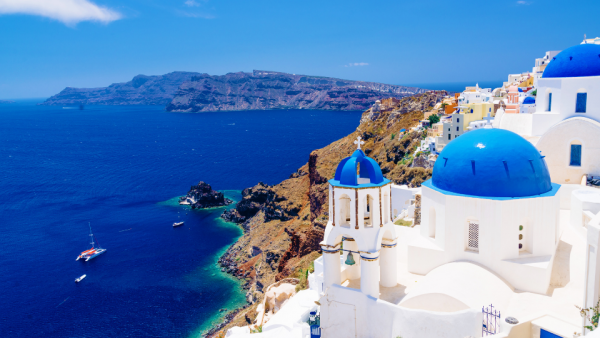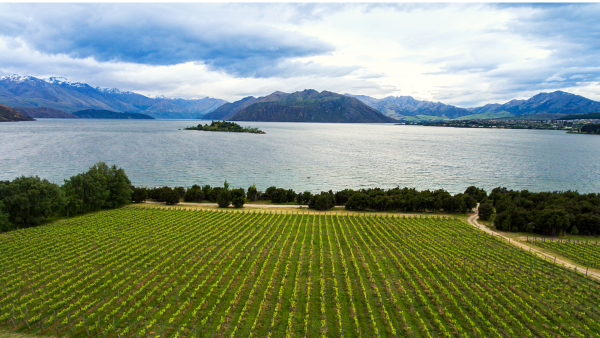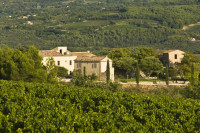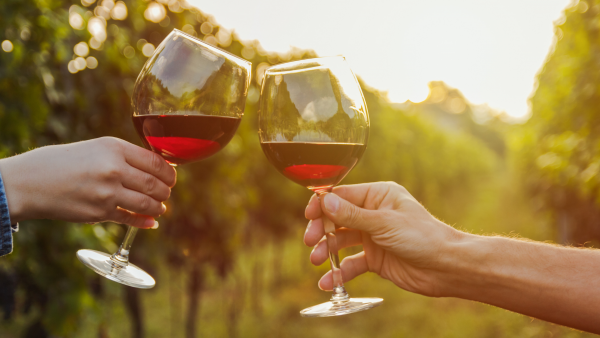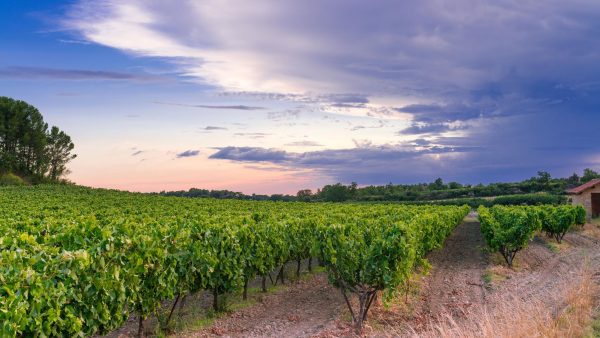Best Of
South African Wines: history, grapes and regions
Even though it is considered to be a New World wine region, South Africa has a long history of wine production that dates back to the 17th century. Cape Town, at the southern point of Africa, was a mandatory replenishing stop for ships transporting goods between Europe, the trade markets of the East and the colonies.
The first vines were planted there in the 1650´s by Dutch mercenaries. But wine production really took off in the 1680´s when 150 French refugees, known as the Huguenots, settled in an area later called Franschhoek – the French Corner. They wanted to escape religious persecution and brought with them their viticultural skills and knowledge.
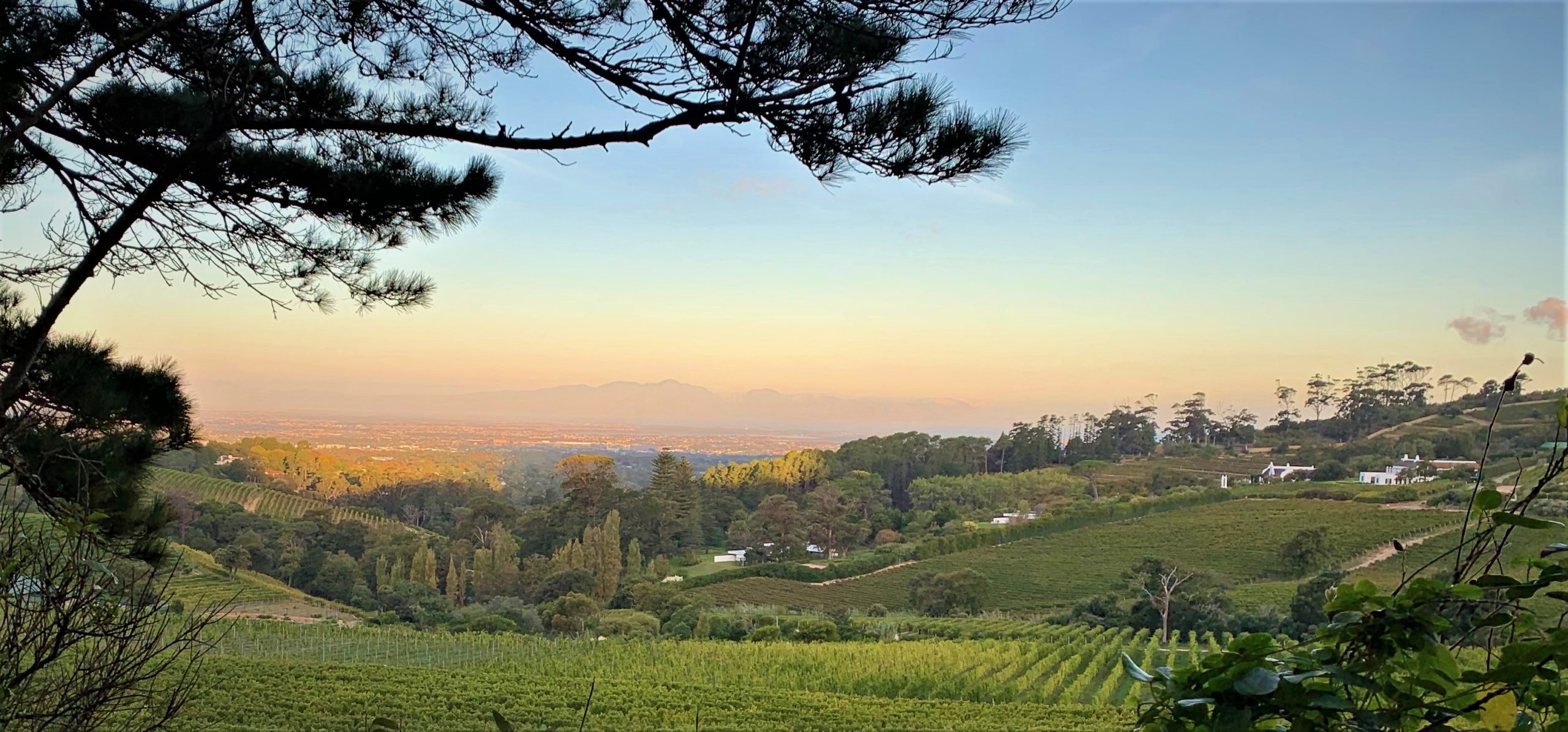
Credit Photo Clifford Lilley
Towards the end of the 17th century, South Africa was home to one of the most famous, expensive, and sought-after dessert wines of the world. Vin de Constance, Napoleon’s favourite wine, was made at the Constantia estate, established in 1685 by Simon van der Stel, the second Governor of the Cape. Nowadays, Constantia is broken up and divided into many wine farms. The result is that it is effectively a small wine region rather than a single estate and a major wine tourism destination.
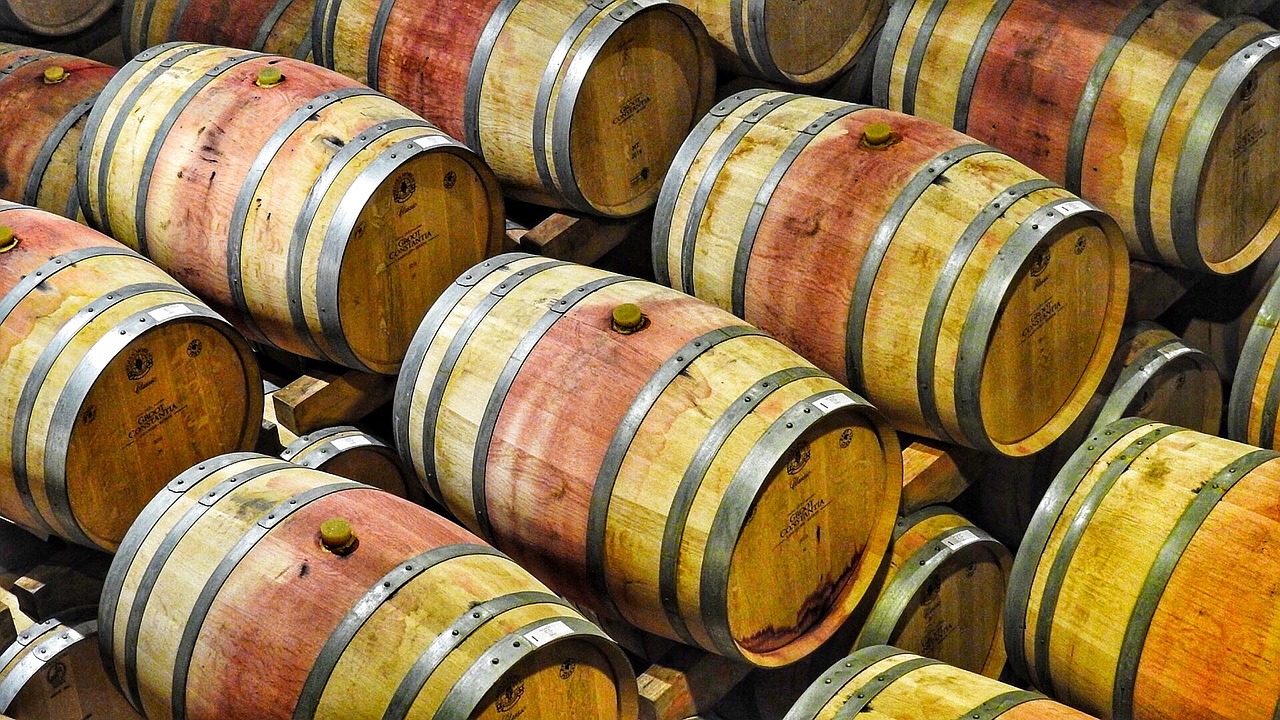
Credit photo Nautical Voyager on Pixabay
The South African´s wine industry suffered numerous setbacks during the 19th and 20th centuries. The opening of the Suez Canal in the late 1800s and a devastating outbreak of phylloxera severely reduced the vineyard area. In the 1980´s the trade sanctions imposed on the country due to its apartheid policies made South African wines fall out of favour. After the demise of the apartheid era, new wines, wineries, and highly qualified winemakers have appeared focusing on improving quality and making South Africa one of the world’s most dynamic wine producers with wines that combine the elegance of the Old World with the accessible, fruit-driven approach of the New.
Grapes, Climate, and Regions
South Africa’s most famous grapes are Chenin Blanc (white) and Pinotage (red). Chenin Blanc is sometimes referred to by its local name Steen and is almost always dry, but ripe and full of flavour.
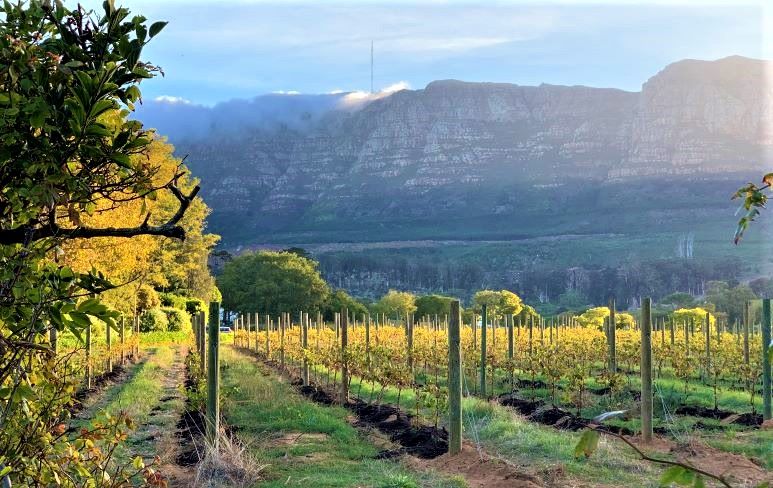
Credit photo Clifford Lilley
Pinotage is a South African creation, developed at Stellenbosch University almost a century ago. Its parents are Pinot Noir, which imparts its strawberry aromas, smooth texture, and complex, farmyard characteristics in the more mature wines, and Cinsault, from the south of France, which adds spice and body. It is bottled on its own or used in Cape Blends together with Cabernet Sauvignon and Merlot.

Credit photo Clifford Lilley
About 95% of the country’s wine regions are found in the west part, where the vineyards benefit from the cooling maritime influence of the Atlantic Ocean. The cool winds generated by the Benguela Current, a cold current that flows up from the Antarctic, and the Cape Doctor, a regular south-easterly summer wind, help reduce temperatures a few more degrees allowing the grapes to reach full ripeness while retaining their acidity and fresh fruit flavours.
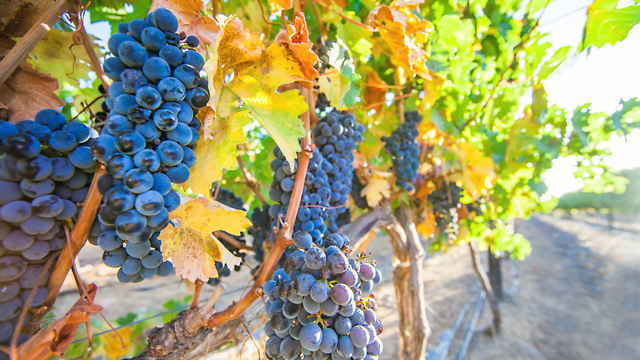
Wine grapes – Credit Canva
Stellenbosch is located just east of the city of Cape Town and is one of the oldest and most respected vine-growing areas of the country. It is home to more premium estates than any other district with vineyards that regularly produce the best balanced red wines of the Cape. North of Stellenbosch we find Paarl. It is one of the hotter regions with no ocean influence but it produces a full of wine styles from crisp, light dry whites to full, long-lived reds. Elgin and Walker Bay are further to the east along the coast. Elgin is one of South Africa’s newer wine regions with vineyards planted at higher altitudes in order to benefit from cooler growing conditions. Chardonnay and Pinot Noir are doing great here giving Burgundian-style wines.
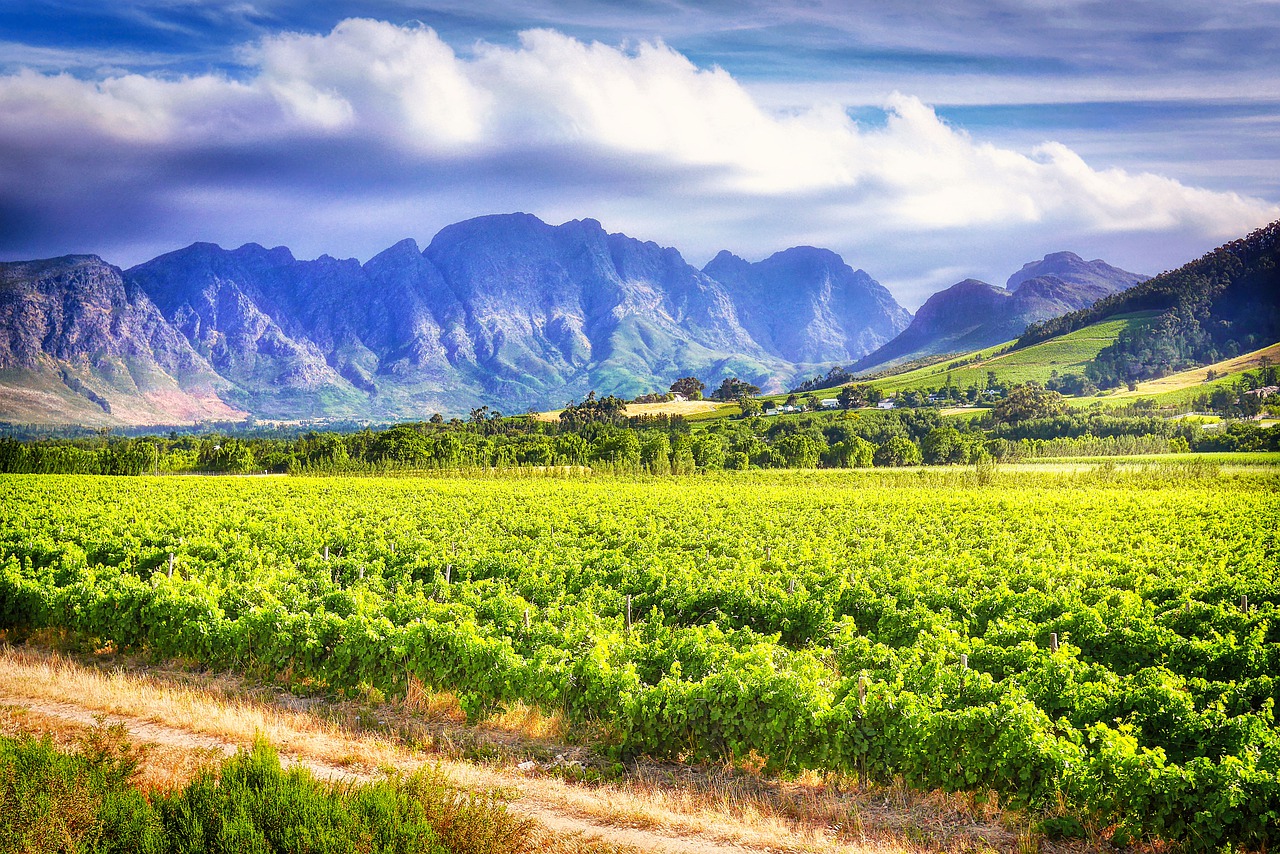
Stellenbosch Credi photo Albrecht Fietz on Pixabay
Sparkling Wines
Sparkling wines are South Africa’s hidden treasure. They are labelled as Méthode Cap Classique (MCC) and are made using the traditional bottle fermentation method of Champagne. Some are made from Chardonnay and Pinot Noir and some from Sauvignon Blanc and Chenin Blanc giving wonderfully aromatic sparklers at amazing prices.
About the author:
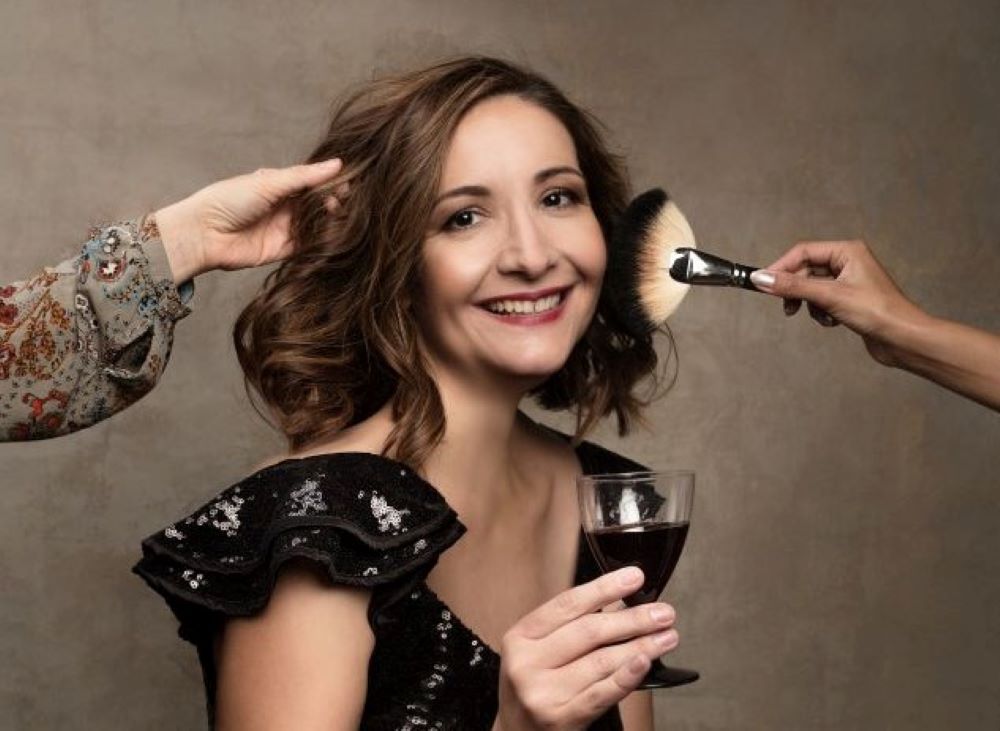 Maria was born in Greece but spent most of her life living abroad. She studied Political Science and Media and Communication at the London School of Economics and worked alongside the Greek Minister of Finance for 3 years. However, it was wine that captured her heart and became her passion. She is passionate about making wine accessible to everyone and loves teaching about it through fun yet informative seminars. She holds the WSET Level 3 certification and will be starting the WSET Diploma soon. In April 2019, she founded the Geneva Wine Society. She organises wine tastings and wine events in Geneva as well as online. Maria has lived and worked in various countries over the past 20 years.
Maria was born in Greece but spent most of her life living abroad. She studied Political Science and Media and Communication at the London School of Economics and worked alongside the Greek Minister of Finance for 3 years. However, it was wine that captured her heart and became her passion. She is passionate about making wine accessible to everyone and loves teaching about it through fun yet informative seminars. She holds the WSET Level 3 certification and will be starting the WSET Diploma soon. In April 2019, she founded the Geneva Wine Society. She organises wine tastings and wine events in Geneva as well as online. Maria has lived and worked in various countries over the past 20 years.
Facebook: www.facebook.com/genevawinesoc
Instagram: www.instagram.com/vinum_lore_ & www.instagram.com/genevawineso
Featured Photo by Thomas Bennie on Unsplash

